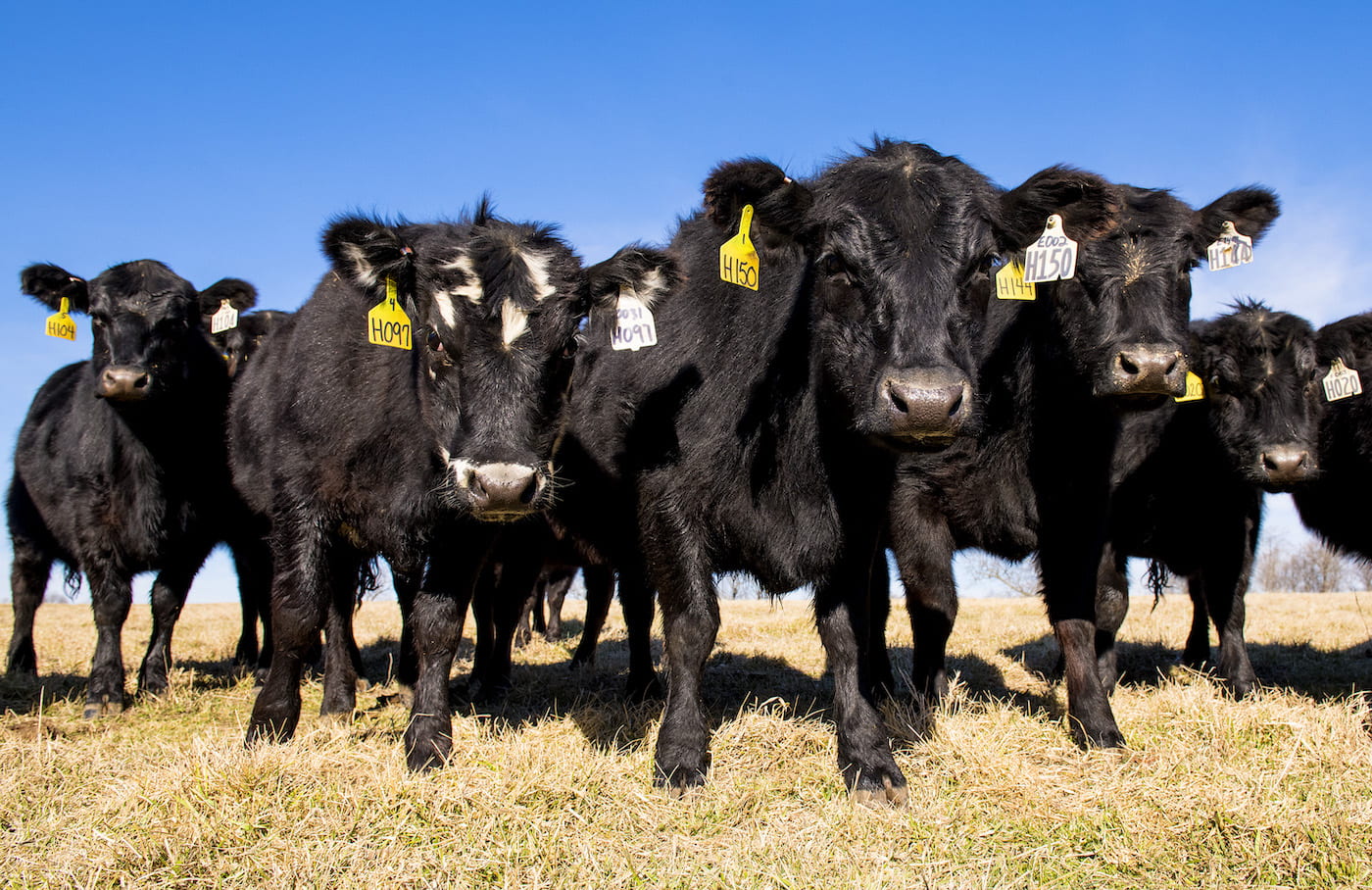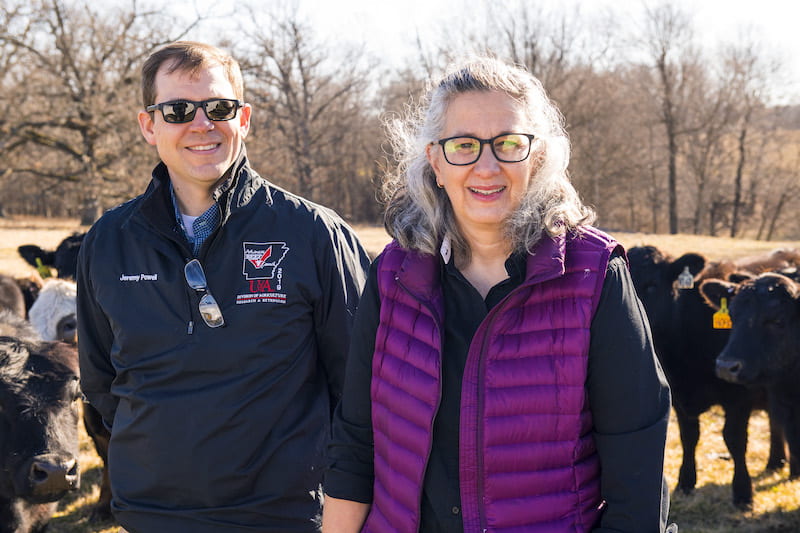Evaluation of the Phosphorus Intake on Beef Heifer Growth Performance and Conception

The Problem
Many husbandry practices in the beef industry are focused on improving production and minimizing costs. In northwest Arkansas, there has been an increase in phosphorus concentrations in soil where livestock and poultry manure have been repeatedly applied to grazing pastures or hay meadows. Consequently, forages grown on soils high in phosphorus tend to contain high amounts of the mineral itself.
Phosphorus is an expensive ingredient towards the cost of typical mineral supplementation of beef cattle. This situation supports further investigation of whether it is necessary to supplement phosphorus in areas where pasture and hay concentrations may be higher. The objective of this research project was to examine the effects of phosphorus intake from grazing on beef heifer growth performance and conception rates.
The Work
Seventy-two crossbred Angus heifers were stratified by body weight (average initial weight 251 ± 3.9 kilograms) and distributed into 8 groups approximately 30 days after weaning occurred. Groups were assigned randomly to 1 of 2 treatments. Treatments were delivered through either a free-choice-mineral mix that contained no supplemental phosphorus for the control group and a free-choice-mineral mix with 4 percent supplemental phosphorus, and identical concentrations of other supplemental minerals for all the animals. Heifers grazed 2.42-hectare mixed grass pastures with a history of livestock and poultry manure application resulting in soil-test phosphorus levels of more than 130 parts per million. Feed was also supplemented with soy hulls equal to 0.5 percent of body weight daily.
Body weights were measured intermittently throughout the study. Prior to the breeding season, reproductive tract score data were collected, and pregnancy data were collected following a two month breeding season. Data were analyzed using the MIXED procedures, a statistical analysis method from SAS Institute, Inc., with pasture group serving as the experimental unit for all dependent variables with main effects of treatment, day, and the interaction of treatment by day.
The Results
Total mineral intake throughout this study did not differ between treatments. On days 84 and 112 after weaning, 58 heifers over 273 kilograms in body weight had an ultrasound evaluation of their reproductive tract. Reproductive tract score did not differ between the treatments. Body weights at day 264 were not significantly different with 409 kilograms plus or minus 6.0 kilograms for animals with no supplemental phosphorus, and 412 kilograms plus or minus 6.0 kg for animals that received 4 percent supplemental phosphorus.
A blood sample was taken from heifers to determine pregnancy status. Researchers found final pregnancy rates of 89 percent for the control group and and 78 percent for the supplemental phosphorus groups. The results show phosphorus supplementation of developing beef heifers for approximately 300 days following weaning and through the breeding season did not improve growth or reproduction when the heifers were grazing pastures with a history of livestock or poultry manure application.

The Value
For Arkansas, the beef calf inventory was approximately 800,000 head in 2020. Theoretically, if replacement heifers were approximately 20 percent of the total cowherd in the state, that would be 160,000 developing heifers. The reduction of cost of the mineral supplementation for this period was approximately $8.10 per head, potentially reducing a total of more than $1.29 million in the annual cost of the development of the Arkansas beef heifer replacement herd.
Funding
University of Arkansas System Division of Agriculture, Arkansas Agricultural Experiment Station
About the Researcher

Beth Kegley
Professor of Animal Science
University of Arkansas System Division of Agriculture
- B.S. in Animal Science from Virginia Tech
- M.S. and Ph.D. in nutrition from North Carolina State University
Kegley’s research focuses on the impact of nutrition on the immune response, disease resistance and performance of cattle, especially the effect of nutrients in the receiving and/or preconditioning diet of stocker cattle on immunocompetence.

Jeremy Powell
Professor of Animal Science
University of Arkansas System Division of Agriculture
Faculty Administrator for the U of A beef cow-calf research farm
- B.S. in Animal Science from the University of Arkansas
- D.V.M. in Veterinary Medicine from Oklahoma State University
- Ph.D. in Animal Science from the University of Arkansas
Powell’s research focuses on the relationships of health management, disease prevention, parasitology, animal wellbeing and immunology. He evaluates strategies and the application of technology and management systems to improve the health, immunity and wellbeing of cattle. He also provides veterinary care for division animals including beef cows, sheep, swine and horses.


